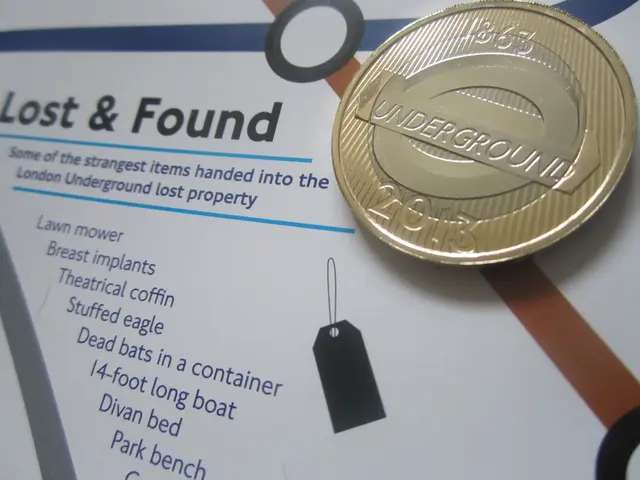The Evolution of Connections: A Look Ahead at Communication Advancements
In the digital age, communication has transformed beyond recognition. The rise of the web has empowered individuals with an internet connection to address a vast audience, revolutionising how we share information [1].
One such evolution is the growing popularity of video conferencing technology, particularly in the United States. This technology, predominantly used in virtual workplaces or among friends, has been facilitated by the increasing prevalence of cameras on laptops and smartphones [2].
The process of smartphones becoming more common and less expensive is a gradual one, with early adopters leading the way. Today, these devices are not just limited to calls but are used for web surfing, gaming, running applications, and accomplishing tasks that were once considered science fiction [3].
Beyond the current landscape, several potential advancements in communication technology are emerging. These technologies could shape the future, making communication more immersive, intelligent, seamless, and integrated into our environment [4].
5G and Beyond (6G) networks are foundational for many future communication technologies. They enable higher capacity, reduced latency, and extremely fast data transfer, paving the way for IoT and real-time remote operations [1][4]. Research into 6G aims to push these capabilities even further, potentially enabling ubiquitous ultra-low latency communication and enhanced AI integration [1][4].
The Internet of Things (IoT) is another area of rapid growth. IoT devices are bridging the physical and digital worlds by providing real-time data and insights, streamlining processes, and enhancing decision-making [1]. Enhanced connectivity combined with printable RF communicators embedded in everyday materials is pushing IoT beyond current limits, facilitating global supply chain transparency and real-time item tracking [1].
Artificial Intelligence (AI) and Machine Learning (ML) technologies are being integrated into communication networks to analyse massive datasets from connected devices, identify trends, forecast outcomes, and automate tasks [1][3]. This transformation is making communication networks into intelligent, adaptive systems that optimise information flow and personalise user experiences [1][3].
Smart wearables integrated with ambient computing could enable seamless interaction with digital information through contextual awareness and voice or gesture commands [2]. Beyond AR glasses and BCIs, these devices could make communication more natural and less device-dependent [2].
Quantum Computing and Communications, while still emerging, promise unprecedented data processing speeds and potentially unbreakable encryption methods, which could revolutionise secure communication channels and data transmission [4].
Virtual Reality (VR) 2.0 and Mixed Reality Advancements could augment communication by creating shared virtual spaces that are indistinguishable from reality, enabling richer remote interactions beyond traditional video calls [4].
However, realising these advancements comes with challenges. Concerns about privacy and safety arise with the development of augmented reality systems [1]. Video conferencing, while convenient, requires users to stay in one place during the call or hold a device for visibility [2].
Scientists are also working on creating brain-computer interfaces that allow people to transmit thoughts directly to a computer [5]. This development could potentially lead to the use of an electronic version of telepathy in the future [5].
The international conference on Future Computer and Communication discusses advancements and future developments in communication technology [6]. The technology of communication continues to evolve rapidly, with future advancements yet to be fully predicted [7].
References:
- CNET
- Futurist.com
- NBS Sao Paulo
- Gizmag
- Science Daily
- The Science Channel
- [Article] The Evolution of Communication Technology: A Comprehensive Guide, available at https://www.example.com/communication-technology-evolution-guide
*Note: The HTC EVO 4G was the first 4G smartphone for a major carrier in the United States, appearing in 2010.
- In the digital age, the rise of the web has fostered a culture where individuals with internet connections can share information globally and address a vast audience, revolutionizing communication [1].
- The growing popularity of video conferencing technology, predominantly used in virtual workplaces or among friends, is facilitated by increasing cameras on laptops and smartphones, such as the HTC EVO 4G [2].
- Technology like AI and ML is being integrated into communication networks to analyze massive datasets, identify trends, forecast outcomes, and automate tasks, making networks more intelligent and adaptive [1][3].
- Future advancements in communication technology may involve immersive, intelligent, seamless, and integrated communication into our environment, enabled by 5G and Beyond (6G) networks, IoT, or virtual reality systems [1][4].
- Scientists are working on creating brain-computer interfaces that could lead to an electronic version of telepathy, potentially transforming how people communicate in the future [5].




